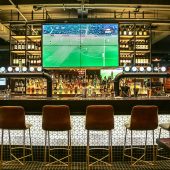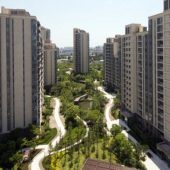Living cost in Shanghai

Following our previous article on the “advantages of living in a second-tier cities” we will this week go deeper into what the actual cost of living is in first- and second-tier city. As many people expect that the cost in a second-tier city is cheaper, we will here analyze if this expectation is accurate and if so, how much cheaper?
In our research we have compared pricing in 6 categories; Food, Housing, Clothes, Transportation, Personal Care and Entertainment.
Let us take a look at how the prices between Tier 1 and 2 compare and ultimately what this means to you as somebody moving to China. With the information presented, you will know what to expect both financially and culturally.
According to mercer recent studies, Shanghai and Beijing are respectively positioned as the 7th and 9th most expensive cities for expats to live in 2018.
1st Tier Cities
Tier 1 cities represent the most developed areas of the country. Large densely populated urban areas with huge economic, cultural and political influence in China. Tier 1 cities attract a lot attention from foreign organizations because they have higher income levels than the national average. These cities are Shanghai, Shenzhen, Guangzhou, and Beijing.
Things to note when discussing each Tier 1 city in China:
- Some of the biggest cities globally
- Populations between 10 to 26 million people
- Talent pools for hiring are educated and qualified for most industries
- Have the highest salaries
- Have the highest real estate/home rental prices
2rd Tier Cities
Tier 2 cities may sound small but don’t let the name fool you. Tier 2 cities in China still can have up to millions of people and have a huge influence in the nation’s economic industry. These cities include Chengdu, Kunming, Hangzhou, Urumqi, Tianjin, Wuhan, etc.
For example, a 50sqm retail location in Hangzhou (Tier 2) can cost 15,000 RMB, the same as a 12sqm location in Shanghai (Tier 1). According to BCG, 60 percent of China’s economic growth will come from Tier 2 and Tier 3/4 cities by 2020. In addition, Tier 1 and Tier 2 cities make up more than 55% of the national GDP. Approximately 65% of fast moving consumer goods sales come from Tier 3 and lower tier cities.
For expats no matter the career, you’ll experience a different lifestyle between tiers 1 and tier 2 or 3 cities
Below is a table that provides a rough overview on the cost of living for the major urban centers in China as well as a second-tier city.
Expat Concern: Cost of Living in Shanghai (1st Tier) vs Chengdu (2nd Tier)
Food
1st tier 2nd Tier
| Basic Lunchtime menu (including drink) in business district. | 64 RMB | 35 RMB | 10 USD | 5.47 USD | |
|
Combo meal in a fast food Chain (Mcdonalds or similar) |
36 RMB | 36 RMB | 5.40 USD | 5.40 USD | |
| 500 gr (1 lb) of Boneless Chicken Breast | 25 RMB | 18 RMB | 3.50 USD | 2.98 USD | |
|
1 Liter (1 qt) of whole fat milk |
25 RMB | 21 RMB | 3.90 USD | 3.28 USD | |
|
12 Eggs Large |
21 RMB | 16 RMB | 3.24 USD | 2.00 USD | |
| 1 kg (2 lb.) of Tomatoes | 15 RMB | 17 RMB | 2.27 USD | 2.65 USD | |
|
500 gr (16 oz.) of local Cheese |
102 RMB | 70 RMB | 15.00 USD | 10.93 USD | |
|
1 kg (2 lb.) of apples |
21 RMB | 12 RMB | 3.11 USD | 1.87 USD | |
|
1 kg (2 lb.) of potatoes |
12 RMB | 8 RMB | 1.77 USD | 1.25 USD | |
| 0.5 L (16 oz.) domestic beer in supermarket | 6 RMB | 6 RMB | 0.91 USD | 0.91 USD | |
|
1 Bottle of red table wine |
125 RMB | 100 RMB | 19 USD | 15.62 USD | |
|
2 Liters of Coke |
8 RMB | 8 RMB | 1.26 USD | 1.26 USD | |
|
Bread for two people 1 day |
30 RMB | 18 RMB | 4.47 USD | 2.81 USD |
Housing
1st tier 2nd Tier
|
Monthly rent for 85 m2 furnished accommodation in EXPENSIVE area |
14,484 RMB |
6,900 RMB |
2,189 USD |
1,078 USD |
|
| Monthly rent for 85 m2 furnished accommodation in NORMAL area |
8,316 RMB |
4000 RMB |
1,257 USD |
625 USD |
|
| Utilities 1 month (heating, electricity, gas …) for 2 people in 85m2 flat | 463 RMB | 250 RMB | 70 USD | 39.8 USD | |
| Monthly rent for a 45 m2 (480 Sqft) furnished studio in EXPENSIVE area | 7,237 RMB | 3,500 RMB | 1,093 USD | 547 USD | |
| Monthly rent for a 45 m2 (480 Sqft) furnished studio in NORMAL area | 4,818 RMB | 2,500 RMB | 728 USD | 391 USD | |
| Utilities 1 month (heating, electricity, gas …) for 1 person in 45 m2 (480 Sqft) studio | 273 RMB | 175 RMB | 41 USD | 27.34 USD | |
| Internet 8 Mbps (1 month) | 121 RMB | 100 RMB | 18 USD | 15.6 USD | |
| 40” flat screen TV | 3,340 RMB | 3,200 RMB | 505 USD | 500 USD | |
| Microwave 800/900 Watt (Bosch, Panasonic, LG, Sharp, or equivalent brands) | 796 RMB | 780 RMB | 120 USD | 11.6 USD | |
| Laundry detergent (3 l. ~ 100 oz.) | 60 RMB | 45 RMB | 9 USD | 7.03 USD | |
| Hourly rate for cleaning help | 40 RMB | 25 RMB | 6.20 USD | 3.90 USD |
Clothes
1st tier 2nd Tier
| 1 Pair of Jeans | 736 RMB | 500 RMB | 111 USD | 78.12 USD | |
| 1 Summer dress in a high-end store | 370 RMB | 280 RMB | 55.1 USD | 43.75 USD | |
| 1 Pair of Sport Shoes (adidas, nike) | 900
RMB |
650
RMB |
135 USD | 101.56 USD | |
| 1 Pair of men’s leather business shoes | 1,017 RMB | 750
RMB |
159 USD | 117.18 USD |
Transportation
| Volkswagen Golf 1.4 TSI 150 CV (or equivalent), with no extras, new | 154.000 RMB | 153.500 RMB | 24,062 USD | 22,906 USD | |
| 1 liter (1/4 gallon) of gas | 7.6 RMB | 7.4 RMB | 1.13 USD | 1.1 USD | |
| Monthly ticket public transport | 222 RMB | 210 RMB | 34 USD | 32.8 USD | |
| Taxi trip on a business day, basic tariff, 8 km. (5 miles) | 53 RMB | 28 RMB | 8 USD | 4.37 USD |
Personal Care
| Cold medicine for 6 days (Tylenol, Frenadol, Coldrex, or equivalent brands) | 34 RMB | 23 RMB | 5.10 USD | 3.6 USD | |
| 1 box of antibiotics (12 doses) | 43 RMB | 30 RMB | 6.72 USD | 4.68 USD | |
| Short visit to private Doctor (15 minutes) | 737 RMB | 380 RMB | 111 USD | 59.37 USD | |
| 1 box of 32 tampons (Tampax, OB, …) | 34 RMB | 29 RMB | 5.21 USD | 4.53 USD | |
| Deodorant, roll-on (50ml ~ 1.5 oz.) | 35 RMB | 32 RMB | 5.29 USD | 5 USD | |
| Hair shampoo 2-in-1 (400 ml ~ 12 oz.) | 43 RMB | 41 RMB | 6.72 USD | 6.41 USD | |
| 4 rolls of toilet paper | 12 RMB | 10 RMB | 1.87 USD | 1.56 USD | |
| Tube of toothpaste | 21 RMB | 20 RMB | 3.21 USD | 3.1O USD | |
| Standard men’s haircut in expat area of the city | 80 RMB | 48 RMB | 12.5 USD | 7.5 USD |
Entertainment
1st tier 2nd Tier
| Basic dinner out for two in neighborhood pub | 225 RMB | 140 RMB | 34 USD | 21.87 USD | |
| 2 tickets to the movies | 123 RMB | 85 RMB | 19 USD | 13.30 USD | |
| 2 tickets to the theater (best available seats) | 913 RMB | 800 RMB | 138 USD | 119 USD | |
| Dinner for two at an Italian restaurant in the expat area including appetizers, main course, wine and dessert | 470 RMB | 290 RMB | 73.44 USD | 45.31 USD | |
| 1 cocktail drink in downtown club | 80 RMB | 50 RMB | 12.5 USD | 7.81 USD | |
| Cappuccino in expat area of the city | 35 RMB | 25 RMB | 5.27 USD | 3.9 USD | |
| 1 beer in neighbourhood pub (500ml or 1pt.) | 47 RMB | 30 RMB | 7 USD | 4.69 USD | |
| iPad Air 2, 64GB | 3,967 RMB | 3,900 RMB | 620 USD | 609 USD | |
| 1 min. of prepaid mobile tariff (no discounts or plans) | 0.51 RMB | 0.25 RMB | 0.08 USD | 0.04 USD |
Conclusion
Upon analyzing the differences between Tier 1 and 2 cities we can come to a few simple conclusions that will help your transition into China be seamless. Most 1st tier cities such as Shanghai and Beijing will charge up to double or more on real estate and housing than 2nd tier cities. Transportation prices such as taxi services also differ between the 2 Tiers, with the basic fare in Shanghai being 14 RMB compared Chengdu’s 8 RMB. However imported goods show very little price variation between 2nd and 1st tiers.
In conclusion, 2nd tier cities, usually the more coastal ones, are similar in pricing with 1st tier cities with differences lying mostly in transportation and lodging. On the other hand, inland 2nd tier cities with no coastal access will be much cheaper than the 1st tier cities, and coastal 2nd tier cities. We at JRE wish you


